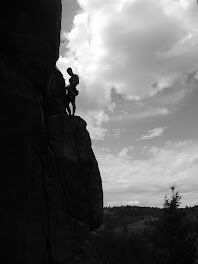20 Online Resources for Artists and Art Enthusiasts
Are you passionate about creating and appreciating art? There are tons of resources online to help with learning about, understanding, buying, selling, and collaborating on art. Here is a list of 20 resources artists and art enthusiasts should check out:
MyArtSpace.com - MyArtSpace.com is a free online community for contemporary art. The site features over 50,000 artists and art enthusiasts around the globe.
DeviantART - This free online art community is a spectacular place for artists to share and sell their collection. DeviantART features digital art, photography, traditional art, film, and animation.
Planet Photoshop - Planet Photoshop is a free site for photoshop tutorials, resources, and reviews. The tutorials cover a wide range of tools and effects that digital artists will find useful.
NoBullART - This online art gallery allows artists to promote, sell, and connect with the art community for free. NoBullART also has a large art community that promotes events, shows, and offers tips.
Saatchi Online Gallery - Saatchi Online Gallery provides a way for artists to display their work to thousands of people around the globe. Within this site, users can also buy art, connect with other artists, and receive critiques from others.
Art - 3000 - This free online gallery offers a place for all artists and photographers to display their work. The site also allows artists to communicate with potential buyers and does not charge a commission.
ArtGraphica - ArtGraphica provides free art lessons and tutorials for anyone interested in learning to draw, sketch, or paint. The tutorials focus on teaching artists to see the world around them.
Digital Art Tutorials - This digital site focuses on bringing professional digital techniques to everyone. The tutorials are a great way to get straightforward instruction or find inspiration.
Artmajeur.com - Artmajeur hosts a large collection of artworks from some of the best contemporary artists worldwide. Within this site, artists will find an online art gallery, artist list, upcoming events, and classifieds.
VisualProgression - The VisualProgession site is an art community for digital artists and graphic designers to share and connect with other artists. Within VisualProgression, artists will find a place to display portfolios, discuss techniques, and more.
GFXartist - GFXartist is an art community designed for digital artists. The site allows artists to browse tutorials, daily news, communicate, and share their work with others around the globe.
723.com - The 723.com online community offers a place for artists, photographers, and models to showcase their work. The free site features unlimited space for artwork, a personal gallery, critiques, and the ability to connect with other artists.
20th Century Art - This art course, offered free by the Massachusetts Institute of Technology, takes a critical look at European and American art. Throughout the course, art students will discover how movements in history affected art.
Artabus - Artabus is a free online art gallery for contemporary artists to display their pieces to the world at large. Art enthusiasts can browse through thousands of sculptures and paintings.
Creative Spotlite - Creative Spotlite houses free lessons for artists and crafters of all expertise.
Arts and History - This free Open University course explores the changes in art during the Enlightenment period. This is a great course for art enthusiasts who want to learn more about are appreciation.
Artcyclopedia - This art history site is great for discussing and learning about top artists, masterpieces, and art news. The Artcyclopedia indexes over 2,300 art sites and links to 180,000 artworks.
ArtWEEN - ArtWEEN is an online artistic community for artists to connect, keep up-to-date on art news, and get international exposure for their work. The site also features weekly artists, galleries, museums, and students.
ArtPromote - This site, created for artists and art enthusiasts, features thousands of galleries, exhibits, artists, and museums. ArtPromote also provides free resources for artists to advance and manage their careers.
Tutorialized - Tutorialized provides free tutorials for digital artists and graphic designers. Artists can find tutorials for Flash, Fireworks, Illustrator, Photoshop, AutoCAD, and much more.
Guest post from education writer Karen Schweitzer. Karen is the About.com Guide to Business School. She also writes about online degree programs for OnlineDegreePrograms.org.


